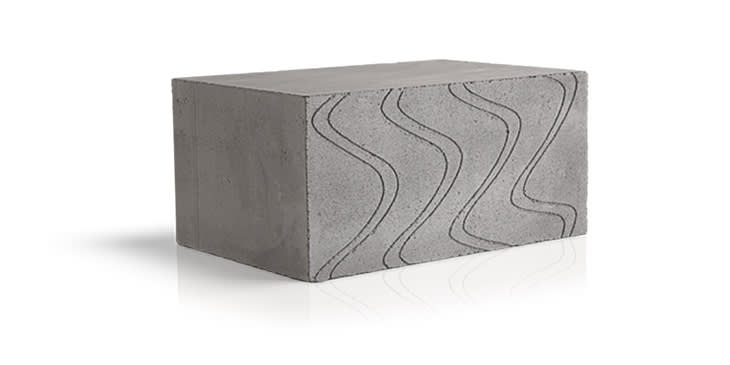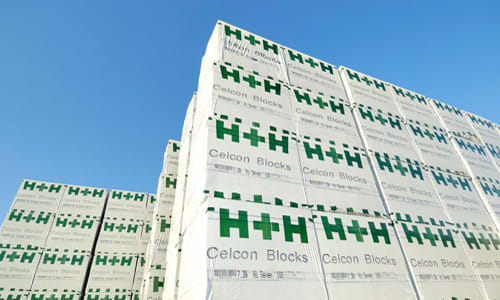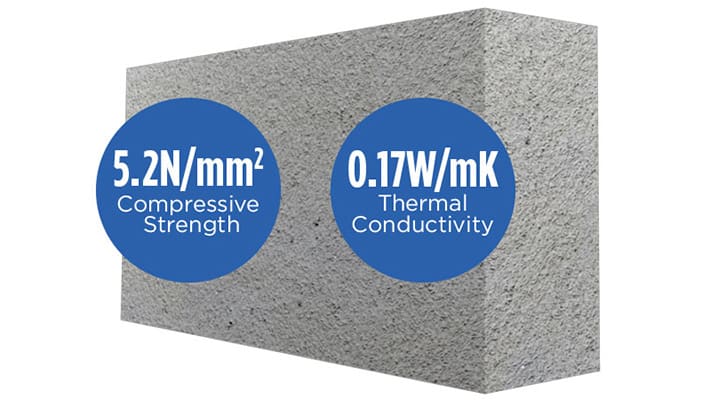Aerated Blocks
(17 Products)Aerated blocks are exactly as they sound; they are concrete blocks that comprise more than 80% air. Technically referred to as autoclaved aerated concrete (AAC), aerated blocks are lightweight precast, foam concrete that offers both excellent thermal and acoustic performance. Despite their substantially low weight, these innovative blocks are as strong as they are light. What’s more, they also boast impressive fire-resistant properties suiting them for application in walls and ceilings.
What Are Aerated Blocks?
Aerated blocks essentially perform a dual structural/insulation function.
Aerated concrete blocks undergo a different manufacturing process than regular bricks and blocks. To achieve their lightweight composition, aerated blocks introduce either air or gas into their manufacture.
In terms of the materials included, aerated concrete blocks incorporate quartz sand aggregates, calcined gypsum, lime, Portland cement, pulverised fuel ash (PFA), water and aluminium powder.
Once the materials are combined and mixed, the mixture is then autoclaved under extreme heat and pressure. For reference, the process of autoclaving is essentially just the heating of a material in an autoclave; a machine which elevates temperature and pressure.
While AAC blocks vary in density and compressive strength, aerated concrete block manufacturers usually report a compressive strength somewhere between 3–8 N/mm2.
For competitive prices and high-quality products, why not explore our comprehensive range of aerated blocks and building materials today.
Aerated Blocks Applications
Aerated Blocks (AAC) are a highly versatile material that can be applied in both load-bearing and non-bearing designs. AAC blocks can be utilised as a foundation laying material as well as in above-ground construction.
Aerated blocks are not just limited to structural applications in low-rise constructions or partitions, but can also be employed as part of curtain walling for taller buildings.
Let’s check their applications:
- Foundations
- Inner cavity wall leaves
- Cavity walls below DPC
- Partition walls
- Internal and external walls
- Fire walls
- Suspended beam and block floors
Aerated Concrete Block Key Features
Due to their insulating design and high thermal performance, aerated blocks can be used to assist in improving EPC ratings, bumping up the overall property value of your project.
Let’s check the specs and many benefits below:
- Quick and cheap to install – cost-effective and reduces build time
- Bigger blocks with fewer joints than non-autoclaved aerated concrete blocks
- Highly versatile
- Class A1 Fire
- Offers a combination of water resistance, frost resistance and insect resistance
- Excellent thermal properties - reduces thermal bridging with low thermal conductivity values
- Uses industrial waste (PFA) as a prime constituent - helping to minimise waste
- Lightweight composition ensures blocks are easier to lift than traditional concrete – quicker load movements
- Higher thermal performance – reduced insulation costs
Frequently Asked Aerated Blocks Questions
Can You Drill Into Aerated Blocks?
Yes, aerated blocks can indeed be drilled. They can also be cut, nailed, milled and grooved to accommodate your project needs.
How To Further Enhance The Durability of AAC Blocks?
Depending on the application, AAC blocks can be finished with engineered or natural stone, polymer-modified stucco, or siding to enhance their durability. If you are applying AAC blocks within a basement, apply a thick layer of damp proofing membrane over their outer surface. You do not have to apply a finish to the inner surface unless you think it is appropriate. Should you wish to cover the internal surface, you can simply cover it with plaster, drywall or tiles.
Are AAC blocks Better Than Brick?
There are a few advantages to using AAC blocks over traditional brick. Perhaps the most obvious of these is AAC's exceptionally light weight. With this lighter weight, comes a reduction in the amount of cement and steel needed to complete the project, which consequently, lowers costs.
As well as this, AAC tends to be a more economical choice due to the fact that it is environmentally friendly. They also tend to be more durable and feature enhanced thermal and acoustic properties.

.jpg)
.jpg)
.jpg)
.jpg)
.jpg)









